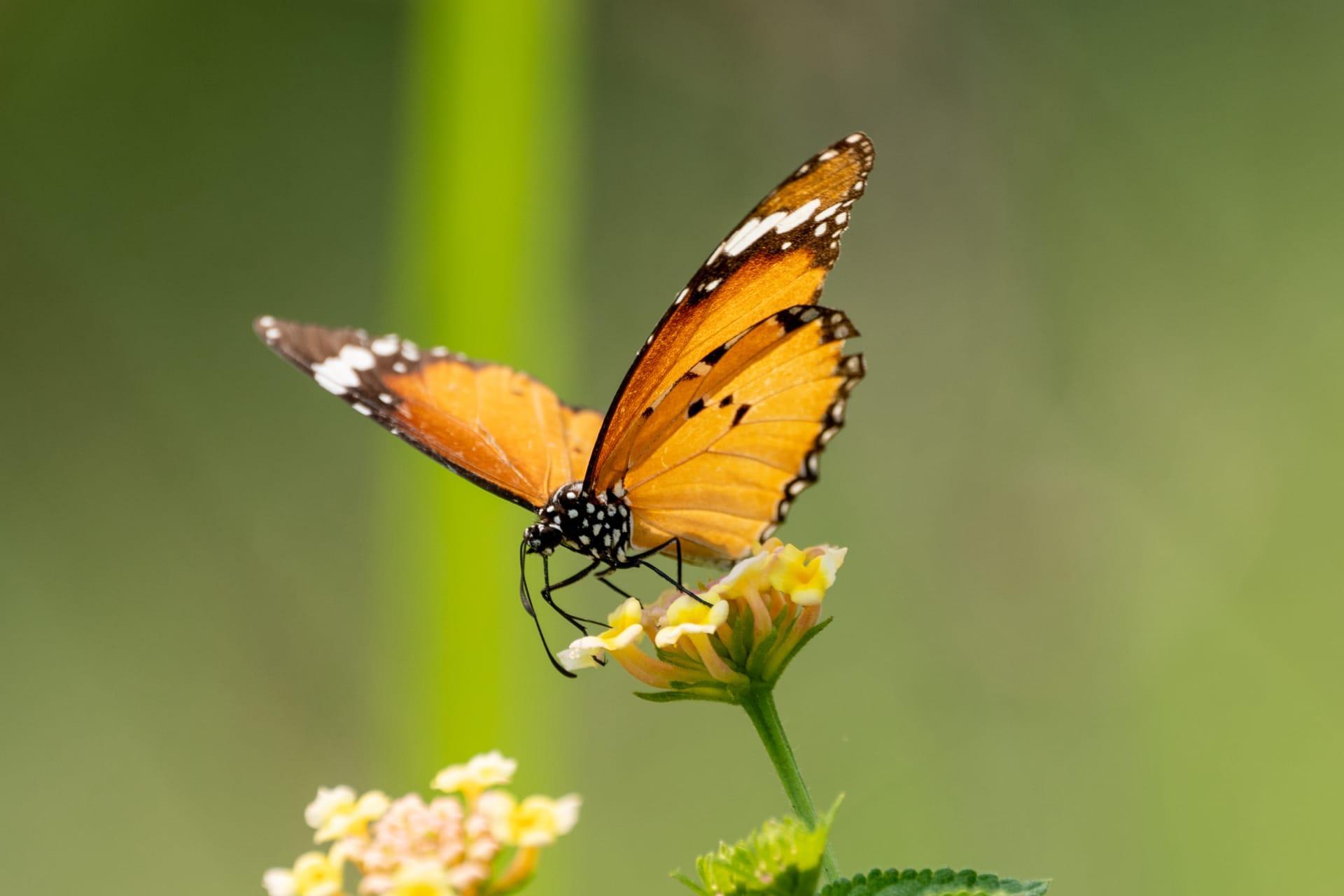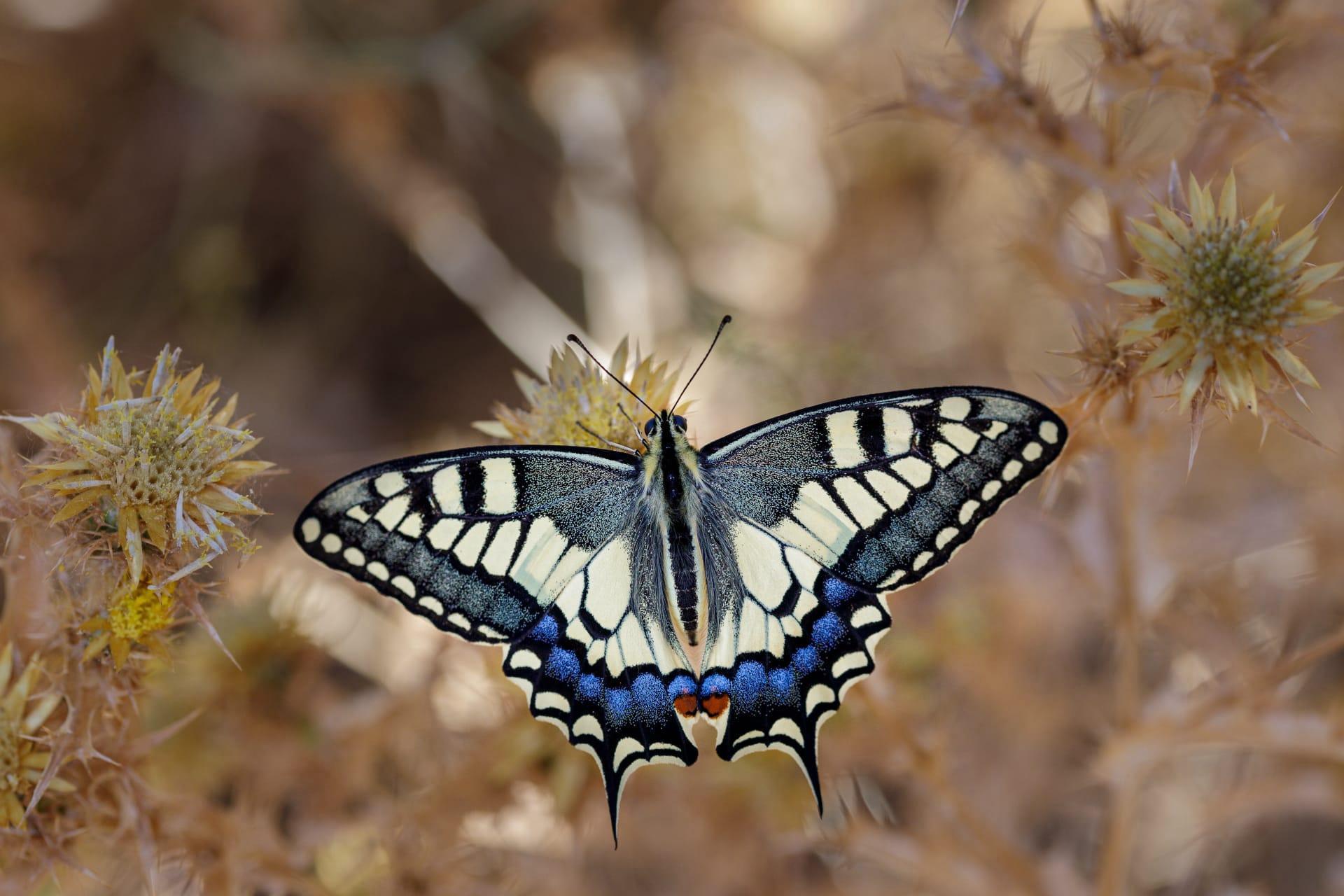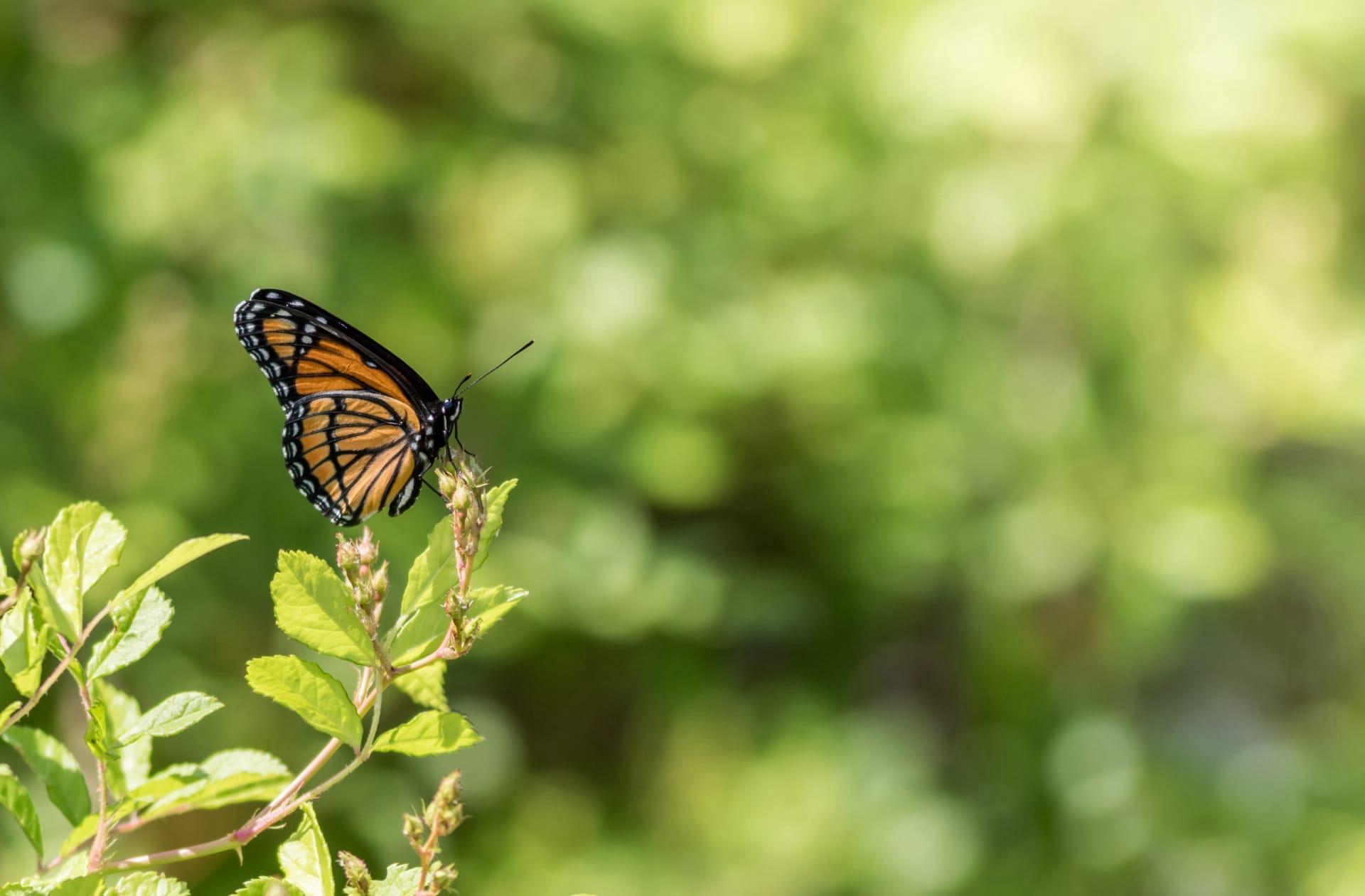1
Butterflies are known for their remarkable journey of metamorphosis. From a caterpillar to a stunning butterfly, this transformation is one of nature's most fascinating processes. A caterpillar first forms a chrysalis, within which it undergoes a radical change. In just about two weeks, what emerges is a completely different creature. This process is a fantastic example of nature's ability to transform, as the butterfly's entire structure and function change dramatically during metamorphosis. For example, the Monarch butterfly, a species famous for its migration, begins life as a tiny egg, then transforms into a caterpillar, a chrysalis, and finally, a beautifully patterned butterfly.
Another interesting fact about butterflies is their method of eating. Butterflies have a unique organ called a proboscis, resembling a tiny, coiled straw. When they find a flower, they uncoil their proboscis and insert it into the flower to sip nectar. This organ is not just a feeding tool but also a highly evolved adaptation for survival. The proboscis allows butterflies to feed on nectar deep within flowers, which is a primary energy source for them. This specialized feeding mechanism is a perfect example of adaptation in the insect world, showing how butterflies have evolved to survive and thrive in their environment.

2
Butterflies have an extraordinary sense of taste. Unlike humans, who taste with their tongues, butterflies taste with their feet. When a butterfly lands on a plant, it can immediately taste if the leaf is good to lay eggs on, ensuring the caterpillars have the right food source when they hatch. This incredible adaptation allows butterflies to be extremely selective about where they lay their eggs, which is crucial for the survival of their offspring.
The color patterns on butterfly wings are not just for beauty; they play a vital role in survival. These patterns can be used for camouflage, warning predators, or attracting mates. For example, the eye-like patterns on some butterfly wings can scare off predators or divert their attacks away from vital body parts. In terms of attraction, the bright and varied colors can signal a potential mate about the butterfly's fitness and genetic quality. These patterns are created by tiny scales on their wings, each contributing to the intricate designs we see. This aspect of butterfly biology demonstrates how they use visual cues for communication and survival in the wild.

3
Did you know that butterflies can see colors that humans can't? Butterflies have a wide range of vision and can perceive ultraviolet (UV) light. This ability plays a significant role in their behavior, especially when it comes to finding food and mates. Flowers that appear plain to the human eye often have intricate patterns in UV light, which are visible to butterflies. This helps them find the best sources of nectar. Similarly, the wings of many butterflies reflect UV light, which is crucial for attracting mates. This extended range of vision gives butterflies a unique perspective on the world, making them adept at navigating their environment.
Another fascinating aspect of butterflies is their migratory behavior. The Monarch butterfly, in particular, is known for its long-distance migration. These butterflies can travel thousands of miles, from Canada to Mexico, to escape the winter cold. What's astonishing is that this migration spans multiple generations. The butterflies that return to the north are several generations removed from those that flew south, yet they find their way back to the same breeding grounds. This migration is one of the most remarkable in the animal kingdom, showcasing the resilience and navigational skills of these delicate insects.

4
Butterflies are also crucial pollinators in our ecosystems. While they are not as efficient as bees, their role in pollination is significant. As they move from flower to flower in search of nectar, they inadvertently transfer pollen, aiding in the fertilization of plants. This process is essential for the reproduction of many flowering plants, contributing to the biodiversity of our planet. Their role in maintaining healthy ecosystems is a vital aspect of their existence, linking them intricately to the health of our natural world.
The lifespan of a butterfly varies greatly depending on the species. Some butterflies live only a few weeks, while others, like some species of Monarchs, can live up to nine months. The short lifespan of many butterflies is due in part to their fragile bodies and the many predators they face. However, in their brief life, they undergo a complete metamorphosis, contribute to the pollination of plants, and, in the case of migratory species, travel vast distances. The butterfly's life, though fleeting, is filled with activity and purpose, making each stage of its life cycle a critical part of the natural world.

5
Butterflies have a fascinating method of thermoregulation. They cannot regulate their body temperature internally, so they rely on external heat sources to warm up. Butterflies are often seen basking in the sun with their wings spread wide. This posture allows them to absorb as much warmth as possible, raising their body temperature to a level that enables them to fly. On cold days, they are less active and may not be able to fly at all. This dependence on external heat sources is a delicate balance in their life, influencing their feeding, mating, and migration habits.
The diversity of butterflies is astounding. There are over 17,500 known species of butterflies worldwide. Each species has unique patterns, colors, and sizes, adapted to their specific environment. For instance, the Blue Morpho's brilliant blue wings are a stunning sight in the rainforests of Central and South America, while the Glasswing butterfly, with its transparent wings, is a master of camouflage. This diversity is not just a marvel of nature but also an indicator of the health of our ecosystems. The presence and variety of butterflies in an area can be a gauge of its environmental well-being, making these delicate creatures important indicators in the study of biodiversity and conservation.